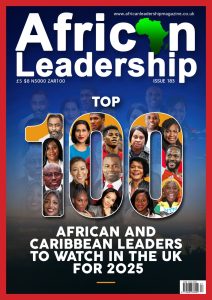The global financial sector thrives on interconnectedness, with stock exchanges serving as crucial pillars of economic growth. The New York Stock Exchange (NYSE) commands a market capitalisation exceeding $28 trillion, while the London Stock Exchange (LSE) boasts over $3.5 trillion. Across Asia, the Shanghai Stock Exchange has surged past $7.5 trillion, driven by China’s economic momentum.
The idea of regional and global integration of stock markets has long been explored, as seen in the European Union’s capital market union efforts and ASEAN’s stock exchange linkages. However, Africa remains fragmented, with over 29 stock exchanges operating independently, reflecting the continent’s economic disunity. Can Africa overcome historical, economic, and structural hurdles to forge a unified stock exchange that catalyses cross-border investment and economic growth?
READ ALSO: Ghana Stock Exchange, IFC and Others Collaborate For Gender Equality
As of 2024, Africa’s combined GDP is estimated at $3.1 trillion, with major economies like Nigeria, South Africa, and Egypt leading the charge. However, stock market capitalisation remains significantly low compared to global benchmarks. The Johannesburg Stock Exchange (JSE), Africa’s largest, holds a market capitalisation of approximately $1.3 trillion, dwarfing its regional counterparts, such as the Nigerian Exchange Group (NGX) at $62 billion and the Nairobi Securities Exchange (NSE) at $22 billion. The collective market capitalisation of all African stock exchanges barely surpasses $2 trillion—less than 8% of China’s stock market value. Liquidity constraints persist, with many African exchanges experiencing low trading volumes and a limited number of listed companies, exacerbating the challenge of investor confidence.
The African Securities Exchanges Association (ASEA) has long advocated for greater integration, emphasising that a unified exchange could enhance capital mobilisation, increase foreign direct investment (FDI), and provide African businesses with a robust platform to access capital beyond national boundaries. In 2022, intra-African trade accounted for only 14.4% of total trade on the continent, compared to 60% in Europe and 38% in Asia. A well-structured unified stock exchange could bridge this gap, unlocking Africa’s capital potential and reducing reliance on external debt financing.
Precedents for Integration: The African Union’s Role
The African Union (AU) has historically championed policies aimed at economic integration, notably the African Continental Free Trade Area (AfCFTA), which officially commenced in 2021. With 54 signatory nations, AfCFTA aims to boost intra-African trade by 52.3% through tariff reductions and harmonised policies. The AU’s Agenda 2063 outlines the need for a single African financial market, with a unified stock exchange as a crucial component. In 2017, the Pan-African Payment and Settlement System (PAPSS) was launched to facilitate seamless transactions among African nations, marking a significant step towards financial unification.
Despite these ambitions, challenges remain. Africa’s diverse regulatory frameworks, currency volatility, and differing levels of market maturity pose obstacles to integration. Unlike the European Union, where the euro provides a single currency for financial transactions, Africa lacks a unified monetary system, complicating cross-border stock trading. However, regional economic blocs have made strides towards integration, providing a foundation for future harmonisation.
The West African Economic and Monetary Union (WAEMU) operates the Bourse Régionale des Valeurs Mobilières (BRVM), a common stock exchange serving eight Francophone West African nations. This model demonstrates that regional integration is feasible, offering a template for broader African adoption. Similarly, the East African Community (EAC) has taken steps to harmonise capital markets, with Kenya, Tanzania, Uganda, Rwanda, and Burundi working towards cross-border stock trading under the East African Securities Regulatory Authorities (EASRA). Meanwhile, the Southern African Development Community (SADC) has explored stock exchange linkages under the Committee of SADC Stock Exchanges (COSSE).
Yet, the fragmented nature of Africa’s capital markets remains a bottleneck. The African Exchanges Linkage Project (AELP), backed by ASEA and the African Development Bank (AfDB), seeks to connect seven major stock exchanges, including JSE, NGX, and NSE, to enhance liquidity and market depth. The initiative mirrors the ASEAN Trading Link, which integrates Southeast Asian markets, demonstrating that regional stock exchange connectivity is a viable precursor to full unification.
Challenges and the Path Forward
The creation of a unified African stock exchange necessitates overcoming deep-seated barriers, including regulatory disparities, currency fragmentation, and political divergence. A major challenge is the absence of a continental financial regulatory body with the authority to standardise listing requirements, trading rules, and investor protection policies. The varying degrees of market sophistication among African economies further complicate the process, with nations like South Africa possessing advanced financial infrastructures while others struggle with rudimentary capital markets.
Currency volatility also presents a significant hurdle. Unlike the Eurozone, Africa’s multiplicity of currencies and exchange rate fluctuations pose risks to investors seeking stability. The possibility of adopting a common African currency for financial transactions has been debated, but economic disparities among nations make its implementation complex.
However, technology-driven solutions offer promising pathways. The rise of blockchain technology and digital assets could facilitate seamless cross-border trading, reducing dependency on traditional financial infrastructures. Additionally, regulatory harmonisation efforts, spearheaded by the AU and AfDB, must accelerate to ensure standardised trading practices and investor protection frameworks.
Lessons from Other Regions
Globally, stock exchange integration has been pursued with varying degrees of success. The European Union’s attempt at a Capital Markets Union aims to unify investment flows, although Brexit has introduced complications. In Asia, the ASEAN Trading Link successfully connects markets in Singapore, Malaysia, and Thailand, providing a model for Africa. Even in North America, where the NYSE and Nasdaq dominate, Canada’s Toronto Stock Exchange operates independently, highlighting that integration does not always necessitate absolute consolidation.
Africa must tailor its approach, balancing regional integration with national economic interests. A phased implementation, beginning with regional stock exchange linkages before progressing to full unification, appears to be the most pragmatic route. Investment in financial literacy, technological infrastructure, and institutional strengthening will be crucial in building investor confidence.
The concept of a unified African stock exchange is not merely aspirational; it is an economic imperative. With Africa projected to be home to 2.5 billion people by 2050, its financial markets must evolve to accommodate increasing capital demands. While challenges remain, the foundation for integration has already been laid through initiatives like AfCFTA, BRVM, and AELP.
To make this vision a reality, Africa must prioritise regulatory harmonisation, currency stability mechanisms, and technology-driven trading platforms. The journey towards a unified stock exchange will require bold leadership, strategic investments, and unwavering commitment. If Africa succeeds, it will revolutionise its financial landscape and position itself as a formidable player in the global economy. The time for fragmented markets is over; Africa’s financial future lies in unity.




